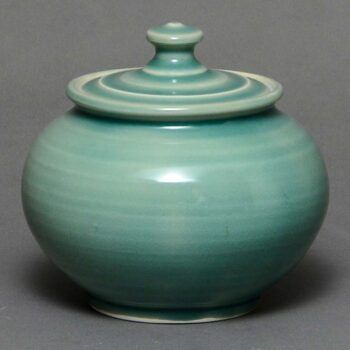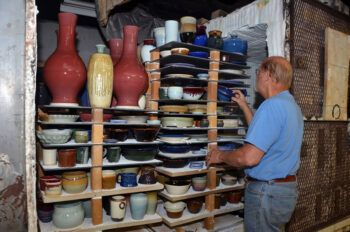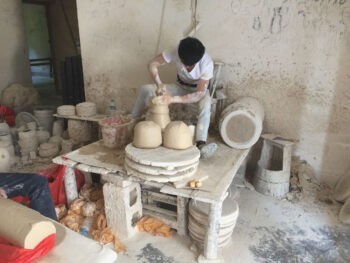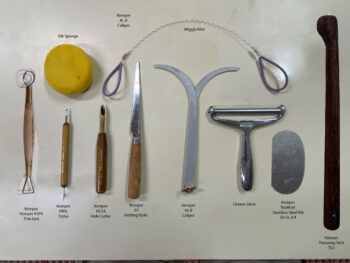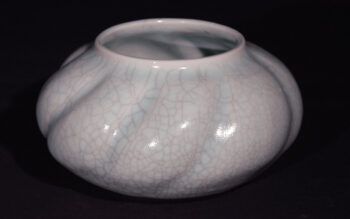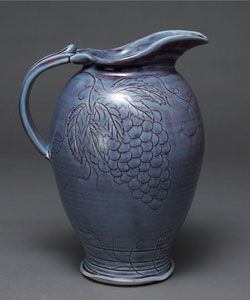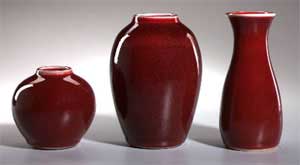Pottery has always had a place in ceremony and ritual, and death has always been treated with respect and prescribed funerary procedures. Often pottery played an important roll. Below are mummified remains from the sands of Egypt, 3500 years BCE.
In the upper photo tower of the pots were pit fired with the rim down and the rounded foot up. You can tell that by the black carbon on the rims. The other jars have burnished and painted drawings. I saw this display in the British museum in 1982 and will always remember it.


Copied from Wikipedia:
Ancient Greek funerary vases are decorative grave markers made in ancient Greece that were designed to resemble liquid-holding vessels. These decorated vases were placed on grave sites as a mark of elite status. There are many types of funerary vases, such as amphorae, kraters, oinochoe, and kylix cups, among others. One famous example is the Dipylon amphora. Every-day vases were often not painted, but wealthy Greeks could afford luxuriously painted ones. Funerary vases on male graves might have themes of military prowess, or athletics. However, allusions to death in Greek tragedieswas a popular motif. Famous centers of vase styles include Corinth, Lakonia, Ionia, South Italy, and Athens.[1]
One major type of funerary vase was the krater, a mixing bowl for wine and water used by elite Greek males at symposiums. Symposiums were an eastern influence[2] in which the aristocracy would lie down and drink; many Greek painters referenced this lifestyle in their art. The krater was so symbolic of elite status that large, richly decorated kraters would be placed upon grave sites. Although in the shape of drinking vessels, some funerary kraters were made just to be a grave marker, as indicated by a hole in the bottom of the vessel. This hole would allow libations to drain through.[3]
The display of highly decorated funeral vase markers, along with costly grave goods, and elaborate processions, helped to display the status of wealthy families. This act is called conspicuous consumption, and would let the whole community know who held power in the region.[4]



